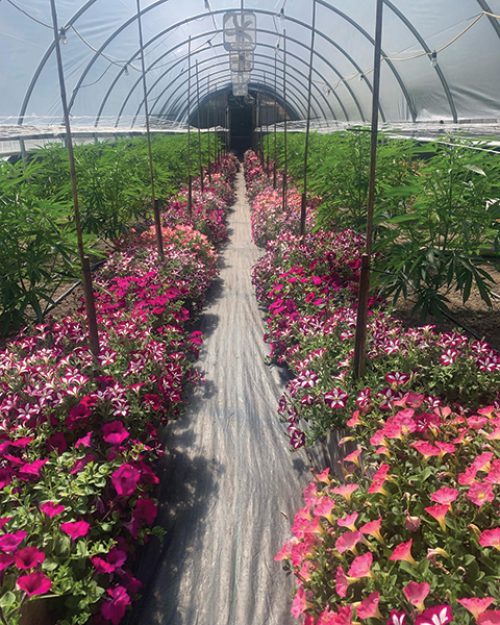The cannabis industry is facing a unique crisis. Despite achieving enormous growth as more states come online, many producers are struggling. Oversupply, particularly in mature markets, has caused wholesale prices to hit rock bottom. A number of operators have been forced to eradicate vast quantities of flower they simply could not sell.
The problem has hit certain markets especially hard. Headlines swirled this summer when it was reported that Canadian cannabis growers destroyed a record 425 million grams (468 tons) of unsold, unpackaged product in 2021. Since adult-use sales began in 2018, cultivators in Canada have destroyed nearly one billion grams.
It’s a similar story in California. Legacy farmers in the famed Emerald Triangle, many of whom have cultivated for generations, have been frantically waving the red flag since adult-use sales began nearly five years ago. Other states are seeing the same trend.
“It is too late for a lot of the small farmers — we will likely see 50% of all Emerald Triangle farms disappear by the end of this year,” said John Casali, owner of Huckleberry Hill Farms in Humboldt County. Footage of Casali mulching pounds upon pounds of cannabis went viral earlier this year, adding further visibility to the catastrophic issues farmers are facing. But what will it take to get the industry back on track?

Regulatory Headaches Lead to Trickle Down Effect
While there is no single cause of the oversupply problems facing the legal industry, there is a theme emerging. Many operators place the blame at the top of the food chain, with government regulations bearing the brunt of their frustrations. The laundry list of complaints runs the gamut from aggressive tax structures, lack of market penetration, difficulty obtaining licensure, and prohibitive marketing laws.
“In many respects, we’re dealing with a regulatory straightjacket up here in Canada in terms of the framework governing cannabis,” said Pierre Killeen, vice president of legislative and regulatory affairs for the Cannabis Council of Canada.
“[Nationwide] legalization has been a success for Canadian citizens. It’s been a success for our governments that have generated tax revenues and lowered the cost of policing and justice related to criminalization. But it’s been a real struggle for the industry.”
California’s cannabis woes also began with the legalization of adult-use sales, something that was supposed to be a win for consumers and producers alike.

Casali said that while legacy farmers like himself were guaranteed a headstart in California’s industry, they were inevitably left out to dry. A loophole in the legalization bill, which called for a one-acre cap for new operators, saw a number of legacy licenses gobbled up by larger companies and investors new to the space through a practice referred to as “license stacking.” This move led to large-scale commercial operations breaking ground in a matter of months, drastically undercutting craft cultivators.
Aggressive taxation has led to financial strain for both producers and consumers. Operators are unable to make ends meet while high prices combined with a lack of access and education lead potential customers back to the thriving illicit market.
In Canada, many companies far overestimated their sales projections in the early days of legalization, something Kellen attributed to overzealous executives who may have been out of touch with their potential customers.
“What we’re dealing with is a very sophisticated supply chain that’s existed for quite a long time and has a captive consumer base,” he said of the unregulated market. “In Canada, we have an inelegant way of measuring the success of legal cannabis as compared to illicit market cannabis, which pegs the market penetration of legal cannabis at about 50%.”
The decision for municipalities to opt out of cannabis sales is also a huge factor in the continuing success of the unregulated market in many communities. People who live in a legal state may wish to purchase products from a licensed dispensary but simply do not have the option.
“That’s another giant problem that California has,” Casali bemoaned. “There are only around 1,000 retailers. They have the ability to get rid of two to four million pounds through the shops. And there’s like 18 million pounds being produced.”

“It’s Like a Giant Puzzle That’s Sitting on the Table…”
Unfortunately, there is no silver bullet that can effectively remedy the oversupply problem in cannabis. It will instead take a number of systemic adjustments for the industry to thrive.
Kellen and Casali both agree that opening the market across state and international borders could make a huge difference. Interstate commerce is still banned in the U.S., but legislative reform could change that, bringing world-renowned Emerald Triangle cannabis nationwide. Kellen notes that European markets in particular may not be able to meet demand as they come online and that broadening exports could benefit the global industry as a whole.
A cap on licenses may also help, something Casali and Kellen both referenced. While free market capitalism may allow the cream of the crop to rise, over-saturation has only hurt the nascent industry. Even Oklahoma, the Wild West of Weed where seemingly anyone could become an operator, has put a two-year moratorium on new licenses to relieve the pressure.
The pair also agree that knowledge will play a key role.
Casali says the misconception among consumers that older cannabis is less desirable, needs to be addressed. Back-end storage solutions that help maintain quality and market education could help reduce the stigma.
As more is revealed about the potential of cannabis, including lesser-known cannabinoids, Kellen believes demand will transcend the current market into the mainstream. He thinks cannabinoid-based products in the over-the-counter pharmaceutical space have big potential.
“What will happen from a competitive perspective is as we develop new products, as we have a better understanding of cannabinoids and terpenes, we’ll be able to develop a product that is much more attractive to the consumer,” he said.
Casali, while concerned about his community, is trying to remain optimistic. While much of the damage has already been done, he feels it will take a truly united front to bring about real change for the future.
“It’s like a giant puzzle that’s sitting on the table — we just have to work together to put the pieces together. I believe it’s possible but it has to be something that we do together as one.”






